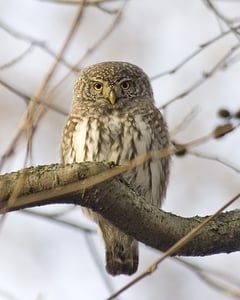 On average we will all have the opportunity to experience 28,470 sunsets in our lives. Each of these sunsets and the night that follows will be slightly different, but many of these differences will go unnoticed. During these sunsets and following nights stars will appear to rise and fall at different times or sometimes not at all, the moon will cycle through its phases and the duration of night will lengthen and shorten all due to the Earth’s relative position to the Sun. During all of these changes however some things will remain constant. Polaris the North Star will appear as the central point in our skies, seasons will change and the Earth will experience the spring and fall equinox, winter and summer solstice and the forming and melting of snow - all of which are significant events that impact all life that surrounds us.
On average we will all have the opportunity to experience 28,470 sunsets in our lives. Each of these sunsets and the night that follows will be slightly different, but many of these differences will go unnoticed. During these sunsets and following nights stars will appear to rise and fall at different times or sometimes not at all, the moon will cycle through its phases and the duration of night will lengthen and shorten all due to the Earth’s relative position to the Sun. During all of these changes however some things will remain constant. Polaris the North Star will appear as the central point in our skies, seasons will change and the Earth will experience the spring and fall equinox, winter and summer solstice and the forming and melting of snow - all of which are significant events that impact all life that surrounds us.
It is these continual changes occurring slowly over time which control our circadian rhythms. This rhythm typically occurs over a 24 hour period and ensures that our bodies take the time to complete various physiological and behavioral processes. All of these processes are completed in an effort to promote personal health and well being. Once we start looking beyond our daily circadian rhythm the human internal calendar begins to fall apart. We must then rely on various other natural indicators to determine date and time accurately. Amazingly though in the natural world it is these subtle changes that living things rely on as their internal clock. Changes in star location, day and night length along with others all combine to provide living things with the cues they need to signal the appropriate time to change various physiological or behavioral processes. If these cues were not cyclic and relatively constant, living things would not be able to determine the appropriate time to start hibernating, migrating, caching food, changing colors, loosing leaves, or reproducing; making survival that much harder.
Saw-Whet and Pygmy Owls are just two species that use the differences between night and day lengths to determine the appropriate times to reproduce.
As the sun begins to climb higher in its azimuth and our seasons change from winter to spring and the length of our day increases. This gradual increase is one that may go unnoticed by many on a daily basis. At this time of year however, it becomes increasingly apparent to us as we leave work or the mountain after skiing in daylight rather than twilight. These changes in day length hours, also known as the photo-period, cause hormone levels in many species to either raise or lower. Hormonal changes then result in physiological or behavioral adjustments that alter the level of desire to migrate, mate, store food or enter into hibernation in many species.
When it comes to the Pygmy and Saw-Whet Owls, longer days and shorter nights spur on changes that result in the owls becoming vocal callers for mates. From March 1 – July 1, 2001, our nights steadily decrease from 13 hours to 9 hours and 4 minutes. Take the time to explore your curious nature in a nocturnal setting and listen for the Pygmy and Saw-Whet Owls which will be calling for mates.
Dale Versteegen is the Adult Programs Coordinator at Walking Mountains Science Center, visit him up at the Nature Discovery Center at the top of the Lionshead Gondola for free, guided nature tours, daily.









